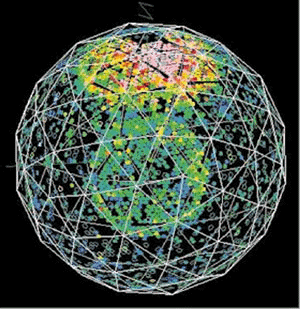The principal goal of LAGUNA is to assess the feasibility of a new pan-European research infrastructure able to host the next generation, very large volume, deep underground neutrino observatory. A research infrastructure able to host new generation underground neutrino detectors with total volumes in the range of 100,000 to 1,000,000 m3 will provide new and unique scientific opportunities, and very likely lead to fundamental discoveries in the field of particle and atroparticle physics, attracting interest from scientists worldwide.
The FP7 Design Study LAGUNA is a collaborative project involving 21 European institutions. LAGUNA brings together on one hand the scientific community, and on the other hand the industrial and technical experts able to help assess the feasibility of this infrastructure.
New frontiers
- The observatory will look for the unification of all elementary forces by searching for an extremely rare process called proton decay. Large size detectors like those envisioned in LAGUNA are the only way to address this question.
- The large size of the LAGUNA observatory will, in addition, allow the detection of a sufficiently large number of neutrinos from very distant galactic supernovae to understand their explosion mechanism.
- The observatory will also perform precision study of terrestrial, solar and atmospheric neutrinos.
- Last but not least, the outstanding puzzle of the origin of the excess of matter over antimatter in the universe after the Big Bang, and the recent measurements of neutrino oscillations and masses, point forward to the need to couple the LAGUNA observatory to advanced neutrino beams from CERN to study matter-antimatter asymmetry in neutrino oscillations.
Enhancing the European Research Area
The impact of LAGUNA on the development of a pan-European common scientific framework is large. The continuous interaction between institutions from different European countries makes LAGUNA not only a very advanced and challenging scientific project, but acts as an instrument of integration, mobility and dissemination. It favours the consolidation of an integrated pan-European scientific community, and strengthening the scientific and technological bases of the industrial community.
The hope is to lead the project into its next phase as one of the research infrastructures identified by the European Strategy Forum on Research Infrastructure (ESFRI Roadmap). If realized in Europe, the project will greatly contribute to the enhancement of the European Research Area (ERA) by strongly supporting new ways of doing science in Europe.












